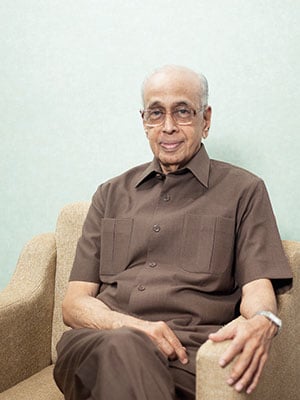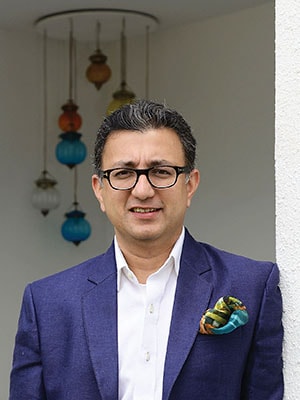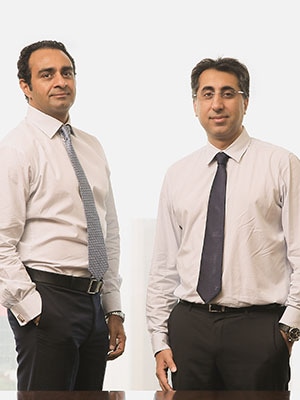
Playing for keeps: The investment strategy of TPG Capital
PE firm TPG Capital has a singular approach to its investments. It tracks successful companies for months, if not years, and stays with them for the long haul. Consider the Shriram example
In 2005, TPG Capital, one of the largest private equity (PE) firms in the world, decided to invest in financial services in India, a sector in which it had developed global expertise for over a decade. It had entered the country in 2004 with an investment in a pharmaceutical firm, but wanted a piece of the fast-growing financial services sector. But, first, it had to choose the right company, one with a sustainable business that could be scaled up quickly.
That was quite easily done.
From the beginning, the PE firm was clear about its interest in the Shriram Group. With its core business in commercial vehicle financing (through Shriram Transport Finance Company Ltd), the Chennai-headquartered conglomerate had a near monopoly in this under-served market. But R Thyagarajan, the founder-chairman of Shriram Group, was reluctant to take on an international investor. His primary concern: What could a US investor bring to the table for a local business like his?
“It took me six months to develop an equation with him (Thyagarajan). He was hesitant. He felt he had a special platform, one that American investors wouldn’t appreciate,” says 48-year-old Puneet Bhatia, managing director and country head of TPG Capital in India. But they persisted and, in February 2006, the firm invested a little less than $100 million in Shriram Transport. It was TPG’s first investment in an Indian financial services company and is symbolic of its long-term strategy in the country.
Typically, PE investors don’t play the persuasion game. But then, Shriram Transport is an exception: It enjoys a near monopoly in south India and, more often than not, investors get returns that are five to six times higher than their investments. Shriram enjoys solid volumes, higher debt yield and minimal credit loss. And, over the years, the group has acquired a dominant market share in sectors where banks and other financial institutions have limited reach or offerings. For instance, it provides loans to people who have only one or two trucks.
Bhatia’s persistence in getting equity exposure in Thyagarajan’s companies paid off and his investment in 2006 evolved into a deeper relationship. Since then, TPG Capital has invested three times in various firms of the same group—Shriram City Union Finance, Shriram Capital and Shriram Properties. (The group, which offers financial services and non-financial businesses in infrastructure, energy, IT and industrial manufacturing, has over 20 companies.)
As of November 2014, TPG Capital has deployed a total of $1 billion. A lion’s share—nearly $550 million—has been funnelled into Shriram Group. While PE firms do sometimes reinvest in their portfolio companies, they don’t usually take such large bets on a single conglomerate.
But TPG Capital doesn’t seem perturbed by the fact that more than half of its India exposure is in one group. It is not a massive risk, says Bhatia. “We don’t feel like we are dealing with one promoter or one family. The way this group is structured, it is not a typical conglomerate. All the four companies that we’ve invested in have their own distinct management teams. Each firm has a different rhythm,” he says.
He adds that TPG Capital believes in creating “partnerships”. It is the only international fund in India to adopt this strategy. “Investing is like a marriage; there are so many ups and downs and we can’t anticipate everything. They (Thyagarajan and Shriram Group’s board of directors) are very enlightened and treat us as partners. We would rather invest in them than seek out new businesses,” says Bhatia.
And even though it may have been love at first sight for TPG Capital, the private equity firm conducted due diligence with every fresh round of investment. It was reassured by the financial transparency in the Shriram Group.
Bhatia’s faith in his investment is bolstered by Thyagarajan’s simple and straightforward way of doing business. The 77-year-old chairman of the over Rs 76,000-crore-worth Shriram Group does not use a cellphone; a spartan man, he drives a hatchback (a Hyundai Santro).
“He [Thyagarajan] oversees the company, but has hired professionals to run it. There is no personal agenda,” says Bhatia.
Striking Gold
Bhatia’s (and TPG’s) gamble to invest heavily in one group appears to have paid off: In May 2013, the PE firm sold about 10 percent of its stake in Shriram Transport to the Piramal Group for $300 million, generating a return that was seven times (or, in industry parlance, 7x) its 2006 investment. A couple of months prior to that deal, in February, it had sold half of its stake in Shriram Transport to institutional investors and raised about $305 million. Private equity investors usually look for 2x to 3x returns in their transactions with investment horizons of three to five years. (Nearly 65 percent of PE transactions in India have failed to offer expected returns.)
With Shriram Transport, however, TPG Capital had a plan in place to help the company scale up faster and attain higher visibility. As Shriram Transport was more active in south India, its success was not widely known. Further, companies in the Shriram Group were not sharing data with credit rating firms, because of which they were not tracked regularly. This had to change, says Bhatia.
Officials from TPG Capital and Shriram began doing the rounds of credit rating firms to find out the kind of data they were looking for. Fast-forward to 2014: There are 50 research houses, including HDFC Securities and Motilal Oswal, that cover the group. “In 25 years, the Shriram Group created a loan book of $1 billion. Over the last seven years since our investment, it has a loan book of $9 billion,” says Bhatia.
Thyagarajan, too, is happy with the relationship his company has developed with the PE firm. “We may approach TPG again for an investment in another company in the real estate space. Any partnership is for a limited period. The only way to retain (investors) is to approach them again for growth funding,” he tells Forbes India.
PE firms may operate in an arena where much depends on them taking the right financial call, but there’s a personal side to this business. Industry analysts point out that it is almost imperative for promoters and investors to be on the same page to see a company grow.
Sanjeev Krishnan, leader (private equity) at PwC India, says taking multiple bets on one group is a reflection of an investor’s comfort with an organisation and the management’s ability to do well. “And if there is conviction about extension in related business segments, which also need capital, it provides an immediate opportunity (for investors),” says Krishnan.
And since “fostering partnerships” is TPG Capital’s India mantra, it has a higher chance of avoiding acrimonious relationships, a trend that’s plaguing many investor-promoter tie-ups in India.
India Strategy
Until October 2014, TPG Capital had only six firms in its India portfolio: It made its debut investment in 2004 with Matrix Laboratories, which it exited in 2006 with 2x returns. Apart from the four companies in the Shriram Group, it had also invested in Vishal Retail.
Then, in mid-November, TPG’s India team closed three important transactions. In one of the largest health care deals in India, the PE firm committed $150 million to Manipal Hospitals for a 23 percent stake; it invested nearly $75 million in Janalakshmi Financial Services for a 23 percent holding; it also acquired a majority stake in Sri Lanka’s Union Bank of Colombo for $113 million.
The transactions come after a lull of two years, during which TPG Capital did not undertake a single deal. According to Bhatia, it is difficult to convince promoters to dilute equity when the markets are low. Unlike many PE firms that invest through mediated deals (where investment bankers act as middlemen), TPG Capital prefers to take on proprietary deals. It has sector-specific teams that track interesting companies for months, at times even as long as two years, before it approaches a promoter.
Globally, TPG Capital is renowned for its focus on leveraged buyouts, growth capital and leveraged recapitalisation investments in distressed companies and turnaround situations. In India, it has a slightly different blueprint. “We have no static strategy. We do buyouts in the West but, in Asia, one has to partner with families. We can only be value enhancers here,” says Bhatia, adding that TPG in India will neither be a passive investor nor undertake block deals.
Nothing, however, is etched in stone, and the firm is open to the idea of undertaking special situations funding in India. (Special situations, which involve deals with companies in financial distress, is an area that TPG Capital focuses on globally.) “If we see a series of distress nature deals, we can then look at structured and debt instruments,” says Bhatia, adding that India could be an untapped ground for distress management. Funding for this initiative will come from its US fund. He adds a caveat, though: Special situations funding tends to be cyclical in nature, and is more often than not dependent on the country’s business environment, economic and sectoral growth and regulation.
The Turnaround Dream
Most investors aspire to turn around a flailing business; it’s still a distant dream for many PE firms in India, but TPG Capital is one of the few investment firms to have a success story in its portfolio. And here, too, its relationship with the Shriram Group came into play.
In 2011, TPG Capital and the Shriram Group took operational control of the erstwhile business of debt-ridden apparel chain Vishal Retail Ltd. The remaining entities are now called V2 Retail. It took TPG three years to turn the Delhi-based company into a profit-making entity. They achieved this on the back of a restructuring strategy, which included rationalisation of store sizes, low-cost sourcing and handpicking store locations in tier-2 and -3 cities where the retailer could operate in a near monopoly.
Net profit of V2 Retail stood at Rs 2.21 crore for the quarter ended September 2014 as against a net loss of Rs 0.96 crore during the same period a year ago. Sales rose 44.61 percent to Rs 70.64 crore.
The turnaround, led by the investors’ teams, took place in phases. TPG Capital clamped down on irrational expansion. It also started what it calls ‘store rationalisation’. “We decided to shrink in order to grow,” says Gaurav Trehan, director at TPG Capital. He adds that the plan was to get into the business, shape it and then grow it.
But first, they had to prune it: The investors shut down about 28 loss-making stores, reducing the number of Vishal outlets to 120 (from 148). No new outlets were opened for 18 months.
TPG also cut down the size of large stores and revamped the management, including hiring new heads of merchandise, marketing, store operations and purchase. It took the investors 12 to 18 months to install the new management.
We identified its core consumers, the merchandise they prefer, the right inventory, and worked out the share of the wallet we would go after, says Trehan.
Now that it’s no longer in the red, Vishal Retail is set to expand geographically; every month it will open three stores in small towns across India.
It has introduced a line of private labels, which is contributing to over 20 percent of its revenues and will also retail online.
Though substantial capital has been invested in Vishal Retail since 2011 (TPG does not wish to divulge the amount), the private equity firm is optimistic about the apparel chain’s future. Such a turnaround could well be a one-off for TPG Capital, but we get an idea of its blueprint in its recent spate of deals.
Following The Money Trail
TPG’s November transaction in non-banking financial company (NBFC), Janalakshmi Financial Services (JFS), highlights its immense appetite for investments in this sector.
In Asia, the fund has deployed 40 percent of its capital in the financial services space. It acquired banks in South Korea, Indonesia and China. In 2004, TPG bought a stake in China’s Shenzhen Development Bank Co, which is one of the most profitable investments for the fund in the continent. In Europe, it bought a 30 percent stake in Denmark’s Saxo Bank A/S.
“Financial services companies are most poised to leverage a country’s economic growth,” says Bhatia. As there is a foreign direct investment (FDI) cap in banks in India, TPG Capital has directed its attention to adjacent sectors such as NBFCs. Like Shriram Transport Finance, the Bangalore-headquartered JFS is also an NBFC, with a focus on urban lower income groups.
JFS Intends To Use The Capital
raised to expand and introduce new financial products. “We have aggressive growth plans. We can’t take deposits, so we need a constant supply of capital. We will increase our loan book to Rs 10,000 crore over the next three years; it’s currently at Rs 2,800 crore,” says VS Radhakrishnan, managing director and chief executive officer, JFS.
In the past, JFS has raised capital from the likes of Morgan Stanley Private Equity Asia, Tata Capital, Treeline Business Solutions, India Financial Inclusion Fund, GAWA Capital and QRG Enterprises. But, for its November funding round, it was looking for a long-term partner. “We wanted an investor who would continue to be a part of our future as well,” says Radhakrishnan. And TPG fits the bill.
Incidentally, in the industry, JFS is seen as one of the top contenders for a banking licence. Bhatia, however, underplays that aspect and says financial inclusion of the unbanked is a huge opportunity in itself.
Bullish On Health Care
TPG’s recent committment to invest $150 million in Manipal Hospitals, part of the reputed Manipal Education and Medical Group (MEMG), rested on one factor: Health care is one of the most sought-after segments for private equity investors in India. And with good reason, too.
In its most recent report, management consulting firm Bain & Company estimated that the Indian health care market is around $65 billion, and has grown by 11 percent over the past five years. The sector, the report said, lags in terms of health care spending per capita. Analysts note that the country’s ballooning population, increasing incidence of diseases, greater affordability, expanding insurance coverage and supportive government schemes are the key drivers of high double-digit growth expectations.
For TPG Capital, investing in Manipal Hospitals is the first step towards a larger play in the health care segment. Here, too, Bhatia is betting big on the promoter, Ranjan Pai, the CEO and managing director of the group. “Ranjan is the catalyst to take the group to the next level. He has a spark; he is progressive, open-minded and very ambitious. We want a $0.5 billion relation with them,” says Bhatia, adding that TPG will invest again in the firm (if required) and also in its education enterprises, if needed.
Bhatia hasn’t strayed from his strategy of identifying the best in the business. (TPG Capital says that it will not invest in niche health care businesses, but only back multi-specialty hospitals.)
“When they (TPG) spoke to me about Manipal Hospitals, they were looking for a platform play where they could make multiple rounds of investments if the business needs it. I thought that was interesting. It means I don’t have to look for a new partner every time we want to raise some money. We are open to them investing in future rounds,” Pai tells Forbes India.
Manipal Health Enterprises (MHE), the health care arm of MEMG, will use the capital to expand. “Health care will be a big area of growth for the next five years. An IPO (initial public offering) is on the anvil for our health care business in three to four years,” says Pai.
The capital raised will be utilised to help the group acquire smaller hospitals in other parts of the country. TPG Capital is also working on making better use of space at Bangalore’s Manipal Hospital and is adding more floors.
TPG is excited about its foray into health care and is already working on plans to help Manipal Hospitals achieve higher scalability. For instance, MEMG has an education arm and is involved in training doctors. “They haven’t leveraged their doctors training initiative as much as they can. We can start an outreach programme to have a funnel of doctors,” says Trehan.
Increased efficiency and streamlining processes are also on the agenda. There are plans to reduce the length of stay for patients and add new lines of surgeries. “We are trying to reduce procurement cost by 20 percent by leveraging economies of scale and negotiating with vendors,” says Mitesh Daga, vice president, TPG Capital.
This is the first time that TPG has invested in a hospital chain, and both the promoter and the investor look forward to building on this new relationship.
And that has been the TPG way. Unlike a majority of private equity players who are always hunting for the next big hidden gem, this firm does the exact opposite: It monitors the most successful companies, and then steps in with the promise of a long-term partnership.
And so far, this formula has held TPG in good stead.
(This story appears in the 30 November, -0001 issue of Forbes India. To visit our Archives, click here.)









